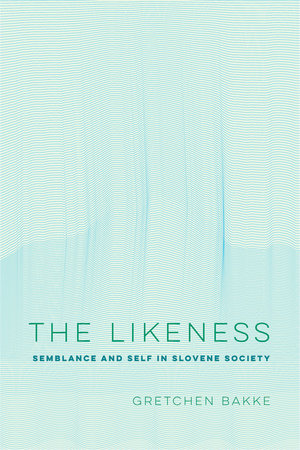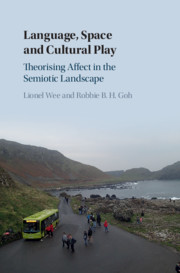
Interview by Krisztina Fehérváry
https://www.ucpress.edu/book/9780520320048/the-likeness
Krisztina Fehérváry: Something I love about great ethnography is the classic move of introducing the reader to what seems a completely strange way of being in the world and making sense of it. You do this with the Slovene notion of the copy, the likeness, the double— not as a faded, devalued copy or reproduction, but as something unique and subversive in its own right, taking up its own space. You write that it took a long time before you began to figure this out. Can you say more about the thesis of your book, and how you came to “see” it?
Gretchen Bakke: There was something perfectly obvious about repetition as comforting and expressive from the very start, because of the way that surfaces and samenesses carried such unabashed symbolic ooomf. But then, when I would take that out of context, and try to talk about how doing something perfectly the same as something already recognizable was both a sort of accomplishment (to be proud of) and also irritant, because things aren’t supposed to be that perfect all I got was a bunch of people looking at me like I was nuts. I was going to school in America, raised in America (though a weird corner of it) (there are so many weird corners) and there was no place at that time in that place for a lack of differentiation to have symbolic and social power.
You ask below about how much the book is actually about America, and it didn’t start that way, but as I wrote I let myself relax a little bit and tried to critique the social-symbolic system that couldn’t recognize the power and effort of non-differentiation. Since The Likeness really is about imperatives that come with socio-cultural transition, I felt it was important to also write about failures of recognition, about how at important moments of communication nuanced practices of subjectivity just didn’t make it through a mesh tuned differently. I thought a lot about ‘On Alternating Sounds’ where Boas (1889) argues for misperception on the part of researchers – grounded in the ‘naturalized’ sounds of their own childhood – as constitutive of an entire theory of mind attributed to those being researched. This seems so straightforward or obvious today, yet precisely this misperception caused a lot of suffering as Slovenia was integrating into Europe because this one simple thing – that sameness can be powerful, protective, comforting; that likeness can wielded as a weapon or used as a cushion; that subjectivity can be spread elegantly across surfaces rather than found in plumbed depths – this way of being just slipped ever into misrecognition and misattribution.
Most of the book, is concerned with how this played out in Europe, but I also have a bone to pick with the intense attachment to the depth model of subjectivity in the US, and this material seemed a way to show readers, especially students, how much any set of practices that produce something like a sense of self, is not natural or true, but just as learned-via-repetition as anything else.
Krisztina Fehérváry: This is fascinating. It will also help me in a project I’ve been working on intermittently about smiling and teeth in Hungary, where the U.S. serves as a basis for comparison but is also an important model for Hungarian dental practice and norms for appearance. The “American” smile is so clearly performative, but people here hate it when I point that out. Hungarians are also getting their teeth done, perfect and white, but not for smiling, especially not that kind of smile. (As elsewhere, such commodified teeth have become a potent marker of middle-class distinction, respectability, and proper hygiene.)
Gretchen Bakke: A sweep toward sameness, as teeth transition into recognizable as having been done. Here too, there needn’t be an emphasis on difference or distinction or even meaning and intention in order for subjectivity or identity to emerge. You see this right away. Other Anthropologists too have made this point, though less so recently. When, thanks to one of the book’s reviewers, I discovered Catherine Lutz’s work (1998) and Michelle Rosaldo’s (1980, 1982) I felt such gratitude for their easy proclamations related to a broad cultural disregard for the inner or for anything like the Delphic imperative. I breathe easier today because more than anyone their work makes the point that there is nothing special about distinction as a delicate mode of individuation. There is no true I. There are lots of ways to be a someone even now today, but all the ways that don’t look like a careful cultivation of minor tweaks of a presumed to be knowable inner self (see esp. Dunn 2003, 2004, 2005), come up as jarring. Non-differentiation, a lack of originality, can be just as expressive as can the endless deployment and cultivation of tiny unique differences.
Krisztina Fehérváry: This also reminds me in some respects of what Daniel Miller (2010) called “Depth Ontology,” referring to the ideological origins of the protestant obsession with plainness, of seeing adornment as artifice. He was talking about make-up and clothes, and how in many places like Trinidad a bare, unmade-up face is just a blank, a mask, that reveals nothing about a person, while dress and make up is how a person reveals who they are. This seems related to what you are saying about kinds of performative subjectivities, although in those examples uniqueness and distinction are still important. Continue reading


